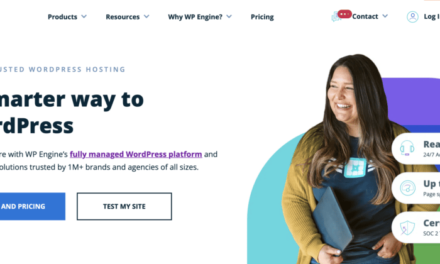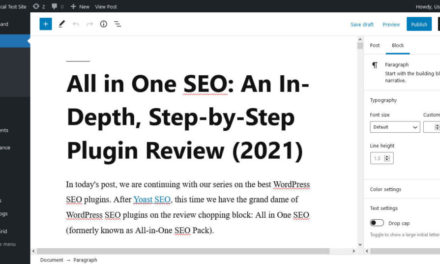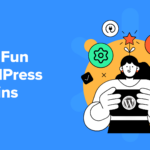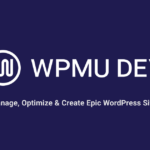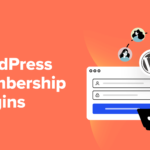Google and other search engines have changed the way they look at websites. While everything used to revolve around keywords, these are no longer enough today. Search engines have become smarter and have begun to explore the true meaning of words, to better understand user search intent and query meaning.
As you can imagine, this has greatly changed SEO and paved the way for Semantic SEO, which improves organic traffic by providing search engines with the information they need to properly understand a search query and clearly respond to a specific search intent.
By building a precise data set rich in information and links between them, search engines can understand the content of web pages and make it more visible across areas that were previously exclusive to advertisers (like Google Shopping), or that cannot be reached by paid advertising (think Google Lens or voice assistants). The key to doing this is structured data.
What is Structured Data in SEO?
Structured data allows search engines to understand the content of your website. To speak the same language as Google, you need to translate the content of a website into information it understands, using a specific vocabulary, Schema.org. This huge shared vocabulary, introduced by Google in 2011, allows you to describe web pages in a way that gives search engines all the information they need to understand what you are trying to say with your site.
When search engines clearly understand who you are trying to reach, they can respond to users’ search queries in a relevant and unambiguous way. In addition, search engines use structured data for rich snippets (such as People Also Ask, Knowledge Panel, Carousel, FAQ, etc.), which improve the user experience on the website by displaying a range of information that makes it easier for users to search and, in the case of eCommerce, make purchases.
Why is Structured Data Important in SEO?
If SEO focuses on bringing more organic traffic to your website via search, then structured data is indispensable, especially in this new scenario.
Google is becoming more and more of a semantic search engine. This means that it needs to know what makes up a web page in order to display it in search results. Using structured data is like talking to Google and telling it what your content is about. That’s why structured data is essential for SEO.
By facilitating a dialog with the search engine, structured data helps your content rank better and get more organic traffic. This is true for both editorial and eCommerce websites. In both cases, structured data contributes to visibility and ranking in SERPs and changes the appearance of search results with rich snippets. This way, you provide more relevant information to users and increase traffic and conversions. As a result, your ranking gets better and better, and your website flies!
What is the Benefit of Using Structured Data?
Now you know what structured data is, let’s dive into the benefits of adding it to your website content.
- Improve your visibility. Structured data helps search engines understand the nature and relevance of your website content. Once Google understands what you are talking about, it can easily display your website in search results. This makes your products and services more visible to users, who are more inclined to click through if they have relevant information that matches their search intent.
- Increase your organic traffic. As a result of increased visibility of your brand and products, you will see an increase in organic traffic to your website. Structured data allows Google and other search engines to optimize the results displayed in SERPs and become more relevant to users’ search queries. Not only that, structured data allows you to get rich snippets that encourage users to visit your website. An increase in organic traffic from the right audience will also bring you business results.
- Optimize your content. Using structured data also allows search engines to optimize content for other formats and devices, such as voice search and Google Lens. This gives you the advantage of making your content accessible to everyone, reaching more people, and generating more organic traffic to your website.
- Expand use of your data. By using structured data you can reuse your data and access conversational AI to build intelligent systems that can enhance the dialog between search engine and user, such as chatbots.
What is a Knowledge Graph in SEO?
“The Knowledge Graph enables you to search for things, people or places that Google knows about—landmarks, celebrities, cities, sports teams, buildings, geographical features, movies, celestial objects, works of art and more—and instantly get information that’s relevant to your query. This is a critical first step towards building the next generation of search, which taps into the collective intelligence of the web and understands the world a bit more like people do.”
Introducing the Knowledge Graph: Things, Not Strings by Amit Singhal
Google introduced the Google Knowledge Graph in 2012. It is a knowledge base through which Google learns the general facts of the world, organizes the information together, and understands how it is connected. This information is organized into entities that describe a thing or concept and allow the machine to interpret what we know about a person, organization, place, or anything else described in a document.
Why Creating Your Own Knowledge Graph Improves SEO?
Think of the Knowledge Graph as the dynamic architecture behind your website that allows crawlers to access content more intelligently and efficiently. Google uses a Knowledge Graph to interpret the entire web, and the same happens when you create one for your site.
That’s why building your own Knowledge Graph in SEO helps make content easier to find and more accessible. The more metadata you can provide to semantic search engines, the easier it is for those search engines to understand the relevance of your content in relation to a specific intent. This results in the search engine showing your website as a result every time that intent is searched on Google, which boosts its visibility and increases organic traffic to your web pages.
How Can You Build Your Knowledge Graph?
The secret weapon to improving the SEO of your website is to create a knowledge graph that is openly accessible to crawlers and linked to your content via structured data.
How can you add structured data to your web pages? You can add the code in your web pages using Microdata, RDFa, and JSON-LD. Google officially recommends using JSON-LD markup over any other wherever possible. If you want to add structured data to your website without requiring technical expertise or the intervention of the development team, you can use an SEO automation tool.
Using AI, WordLift identifies topics most important to your business, organizes them into entities, and then stores them in a vocabulary. The tool then relates the entities in the vocabulary and converts the information into linked data. This way you add structured data to your content and build your Knowledge Graph, getting more visibility and more organic traffic to your website. Not only that, by using WordLift you create and strengthen internal links that positively affect your website’s ranking in Google’s SERP and increase the time users spend on the website, growing your business.
In addition, you can collect and analyze data and results from your work with entities, by using the WordLift Looker Studio Connector. By combining data from Google Search Console and the Knowledge Graph (as well as any other desired sources), you can build semantic reports, evaluate your performance, and improve your strategy.
Structured data and knowledge graphs are often overlooked in daily SEO practice, but by using a reliable tool, you can start harnessing their power and bringing more, engaged users to your site.



